#igbo women
Explore tagged Tumblr posts
Text

The 1815 Igbo conspiracy in Jamaica’s Saint Elizabeth Parish, which involved around 250 Igbo slaves, described as one of the revolts that contributed to a climate for abolition. A letter by the Governor of Manchester to Bathurst on April 13, 1816, quoted the leaders of the rebellion on trial as saying “that ‘he had all the Eboes in his hand’, meaning to insinuate that all the Negroes from that Country were under his controul”. The plot was thwarted and several slaves were executed.

The 1816 Black River rebellion plot, was according to Lewis (1834:227—28), carried out by only people of “Eboe” origin. This plot was uncovered on March 22, 1816, by a novelist and absentee planter named Matthew Gregory “Monk” Lewis. Lewis recorded what Hayward (1985) called a proto-Calypso revolutionary hymn, sung by a group of Igbo slaves, led by the “King of the Eboes”. They sang: Oh me Good friend, Mr. Wilberforce, make we free! God Almighty thank ye! God Almighty thank ye! God Almighty, make we free! Buckra in this country no make we free: What Negro for to do? What Negro for to do? Take force by force! Take force by force!

“Mr. Wilberforce” was in reference to William Wilberforce a British politician, who was a leader of the movement to abolish the slave trade. “Buckra” was a term introduced by Igbo and Efik slaves in Jamaica to refer to white slave masters.
#buckra#efik#igbo#igbos#african#afrakan#kemetic dreams#brownskin#brown skin#afrakans#africans#african culture#igbo culture#igbo attire#igbo ladies#igbo language#igbo village#igbo women#igbo names#sunday igboho#igboland#william wilberforce
23 notes
·
View notes
Text
The Cultural Significance of the Igbo August Meeting
At the heart of Igbo communities lies an age-old tradition, particularly significant for women—the Igbo August Meeting. This annual congress, held in August, draws Igbo women from various corners of the world (Home and Abroad) back to their ancestral villages, where they engage in discussions and collectively shape the future of their communities. Historical Background Historically, women in…
#august meeting#igbo culture#igbo women#Igbo women festival#The meaning of Igbo august meeting#umuada
1 note
·
View note
Text

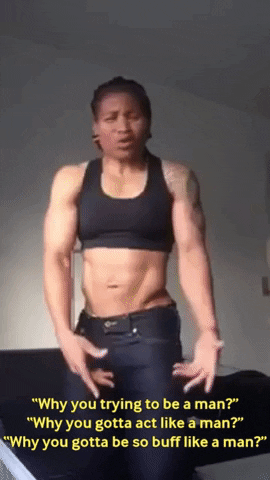


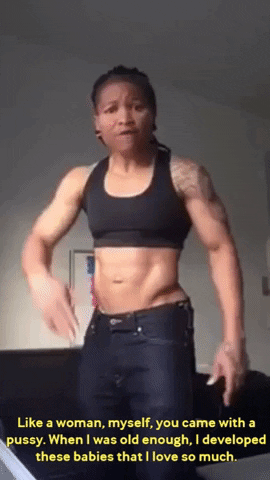
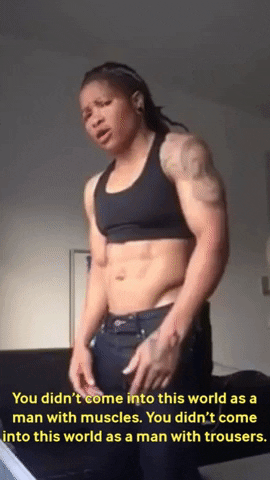
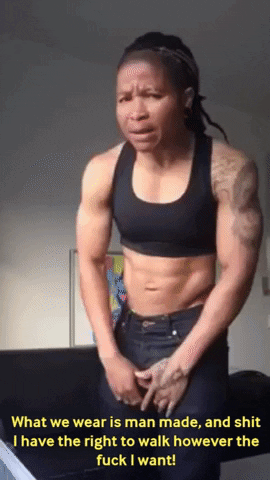
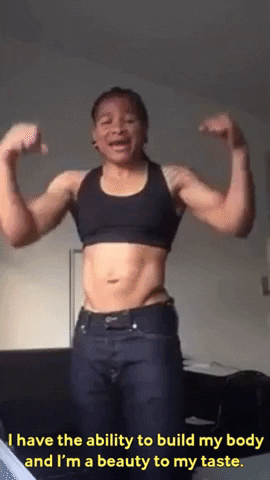
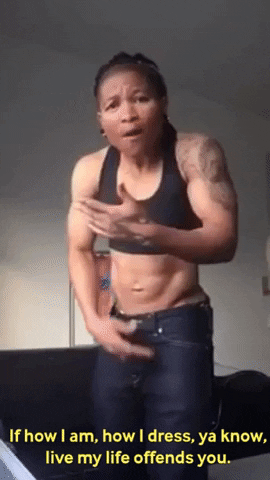

Chi Chi Igbo (soccer, fitness trainer): Youtube, TikTok, IG
#Chi Chi Igbo#women's soccer#sportswoman#masculine women#womanism#tattoo#quotes#fashion#fitness#v-cut#deltoid#bicep#gif
294 notes
·
View notes
Text
[Note: Long but extremely instructive quote about a group of indigenous women who fought back against European colonization and lost.]
The [Igbo] women's war began in 1929 in a place called Oloko. The British had recently introduced a system of taxing men and had decided that in order to assess the taxable wealth of all the people, it would be necessary to count women, children, and domestic animals. When Okugo, the chief of Oloko, attempted, under instructions from the local British officer, to count the goats and sheep belonging to Nwanyeruwa, an important woman in the village, she yelled, "Was your mother counted?" at which point they seized each other by the throat. A meeting of women was called, where it was decided to send a palm leaf, the symbol of trouble and a call for help, to all the women in the area. Women poured into Okugo's compound from around the countryside and proceeded to "sit" upon him. To "sit" upon a man is a pidgin English term referring to the punishment inflicted by women on any man who has broken their laws. It has the same meaning as "spoiling" a person's property. The crowd mobbed the chief, damaged his house, demanded his cap of office, and forced the district officer to arrest him and charge him with assault. "The women," said this officer with some embellishment, "numbering over ten thousand, were shouting and yelling round the office in a frenzy. They demanded his cap of office, which I threw to them, and it met the same fate as a fox's carcase thrown to a pack of hounds. The station between the office and the prison ... resembled Epsom Downs on Derby Day."
Despite assurances from chiefs and administrative officers that women were being counted for purposes other than taxation, the trouble spread to Aba, an important trading center. There some 10,000 women, calling themselves "the trees which bear fruit" and "scantily clothed, girdled with green leaves, carrying sticks," converged upon the town. They attacked and looted the European trading stores and the bank, broke into the prison, and released prisoners. After 2 days of rioting, troops arrived and dispersed the crowds without serious casualties.
In another part of Igbo land crowds of women gathered, bedecked in the symbols of war. "Dressed in sackcloth, their faces smeared with charcoal, sticks wreathed with young palms in their hands, while their heads were bound with young ferns," they burned the Native Court and sacked and looted the European store and other property. They declared that the district officer "was born of a woman, and as they were women they were going to see him." When the women mobbed police and military troops, 18 were killed and 19 wounded. In another incident, elsewhere, 32 women were killed and 31 wounded after a mob of women made threatening and obscene gestures against the troops, calling them sons of pigs, and striking at the district officer with their sticks.
The trouble that broke out in early December was under control by the twentieth day of that month. Igbo men did not participate in the rioting. With a few exceptions, they acted as passive but consenting parties to the behavior of their wives. Children were nowhere in evidence during the riots. The rioting was carried out solely by adult women, who sent round the palm leaves to rally their comrades and beat the drums to convey the message of war, just as the drums are sounded to announce a council meeting. Unwilling women were forced to join. One woman, whose daughter-in-law was killed during the rioting, testified as follows:
We met a crowd of women heading to Utu-Etim-Ekpo. The women stopped us. There were plenty too much women, a very large crowd. They were coming along the road and beating their laps and lifting their heads towards the sky and waving their sticks. All had sticks; big sticks. I was afraid of them. They took away my basket and forced me to join them . . . "You are a woman, you must join us." They looked quite different from any other crowd of women I have ever seen. They had nkpatat (wild fern) round their heads. There were no children with them. As they had no children with them that also made me afraid. I do not know where any of the women came from. I was very much afraid of them and did not look at their faces.
The riots were a testimony to the vigor and solidarity of Igbo women. Although the threat of taxation was the immediate cause, they were really fighting to preserve "the spirit of womanhood." Speaking to the subsequent Commission of Inquiry, the women said, "We are not so happy as we were before . . . Our grievance is that the land is changed — we are all dying." Taking these words literally, the British did not understand their meaning. In fact, the women were right — their way was dying, their spirit and ties to the land were slowly being crushed by the new ways brought by the Europeans. The power of the women's councils had been eroded by the institution of a Native Court system composed solely of Igbo men. During the riots these courts were sacked and burned in 16 Native Administration centers. When giving evidence, the women "uttered a flood of criticism against the corruption and injustice of the chiefs and courts." The commission promised that the Native Courts would be reorganized to reflect more faithfully the Igbo system of justice, and that women would sit as judges.
In 1934 this promise had not been fulfilled. The women's councils had lost more power because the government forbade the women to "war," which had been their major means of enforcing their rulings. In rising to defend what they called the "women's world," Igbo women lost the women's war. Believing themselves to be inviolable, the women were shocked at the carnage leveled against them. Despite their assertions of being prepared to die, they firmly believed that the soldiers would not fire on women, that they had no bullets, and that women were never killed in war. As rioters, they compared themselves to vultures, which in Ibibio (a neighboring tribe) means the "messengers of God." One woman said to the commission:
I was surprised to see the soldiers fire as we were women we call ourselves vultures as we did not think soldiers would fire at us. Vultures go to market and eat food there and nobody molests them nobody will kill vultures even in the market, even if it kills fowls. We only fling sticks at them if they take our chop and so we thought soldiers will not harm us what we may do.
European education, Christianity, and the desire for European goods also contributed to the end of the "women's world." A fitting epilogue is delivered by Sylvia Leith-Ross, a concerned British woman, who wonders how long it will be before education can "give the girls something as important, as satisfying, as pervasive, as the land gave to their mothers." And so a new sex-role plan is imposed by the conquerors on the conquered.
-Peggy Reeves Sanday, Female Power and Male Dominance: On the Origins of Sexual Inequality
#Peggy Reeves Sanday#colonizers#igbo culture#female rage#female oppression#male violence#womens history#patriarchy
28 notes
·
View notes
Text
INCORPORATING IGBO CULTURE INTO MY NOVEL
Bringing Igbo Traditions to Life Through Storytelling
Incorporating elements of one’s ethnicity into a story isn’t always easy. While working on incorporating Igbo culture into my novel, I’ve encountered both exciting discoveries and challenges. However, the process has taught me a lot, and I want to share my experience so you can do the same with your own culture.
Where to Start?
Before you begin, it's important to have a basic understanding of your culture’s history, language, myths, and traditions. But the real starting point for me came with one simple question:
What’s the setting?
A novel’s setting influences many aspects of storytelling, including cultural elements. In Igbo history, there are three major historical settings:
Pre-colonial
Colonial
Post-colonial
In my novel, Divine Priestess, I wanted to not only write about my culture but also learn from it. So, I chose to set my story in the pre-colonial era. This decision brought a major challenge: how do I accurately describe the setting?
Clothing & Cultural Representation
In my YouTube video, I mentioned an important feature of Igbo culture—clothing. Some notable traditional fabrics include:
Isi Agu (lion head fabric)
Akwete
Plain George
Since my story takes place in a pre-colonial setting, I also included older materials like raffia, hemp, and sisal clothing.
For warriors, I asked myself: What did they wear in battle?
Instead of iron armor, Igbo warriors relied on hides and skins, as well as clothing that allowed for speed and agility. Strength alone wasn’t the focus—strategy and movement were equally important.
What’s Next?
In my next video, I’ll be exploring:
Modes of communication and transportation
Traditional housing and cutlery
Igbo phrases and language—and how I incorporate them into my book
I’d love to hear about your own cultural background! Let me know where you're from and how you incorporate your heritage into your writing.
Follow for more updates, and be sure to check out my YouTube video for a visual breakdown!
#story writing#writing#writers and poets#writerscommunity#writing stuff#writing community#nigerian#fiction writing#african writers#writer#writers#igbo culture#igbo#written#writers on tumblr#writeblr#female writers#writers of tumblr#writers life#writterscommunity#writters on tumblr#writting#fiction#fantasy fiction#fantasy#fantasy books#nigerian writer#nigerian women#nigeria#igbo fiction
13 notes
·
View notes
Text
youtube
🩷
#youtube#blackwomen#black tumblr#black women in luxury#blackpeople#blackgirls wake up#blackout#black hair#4hairtype#blackgirls#blck girl magic#blackgirlcode#african american#igbo culture#parismilan#chrissie#black femininity
5 notes
·
View notes
Text
Announcing my new art shop featuring afrofuturism, Black Girl Magic, Indigenous power and more ART WITH SOUL to get your mind right. Welcome! 🖤
#black art#blackgirlmagic#black women#black woman artist#black girl magic#black goddess#blackwomanartist#african tradition#igbo#prints#wallart#cyberpunk#afrofuturism#afrofuturistic#fantasy#neoncore#moon magic#blackgoddess#melanin power#melanin poppin#buyblack#blackowned#indigenous#blackownedbusiness#ai art gallery#artists on tumblr#buy prints#inspiration#women empowering woman#black woman magic
27 notes
·
View notes
Text
1 note
·
View note
Text
The Igbo Women's War was one of the major revolts against the British Empire in the 1920s:
The Igbo Women's War, like its more famous 1920s counterpart in India in Amritsar, was a good illustration of how the British Empire actually worked, especially outside the white dominions. A peaceful protest of Igbo women against the British Empire's oppression was slaughtered in cold blood in what was intended to be exemplary violence, and in reality contributed to the first steps of the unraveling of British power in Nigeria.
#lightdancer comments on history#black history month#african history#imperialism in africa#british empire#nigeria#igbo women's war
0 notes
Text
Look book: 8 Bridal Photoshoot Inspiration Vol 3
Hi there, welcome to another edition of Nigerian bridal photoshoot where we compile the best and most extravagant looks for your inspirational purposes. Today’s editions comes from 4 amazing tribes in Nigeria when it comes to traditional bridal weddings, we love the elegance and rich colour contrast they all exhibit and trust us when we say they are elegant. If you haven’t decided on a look for…
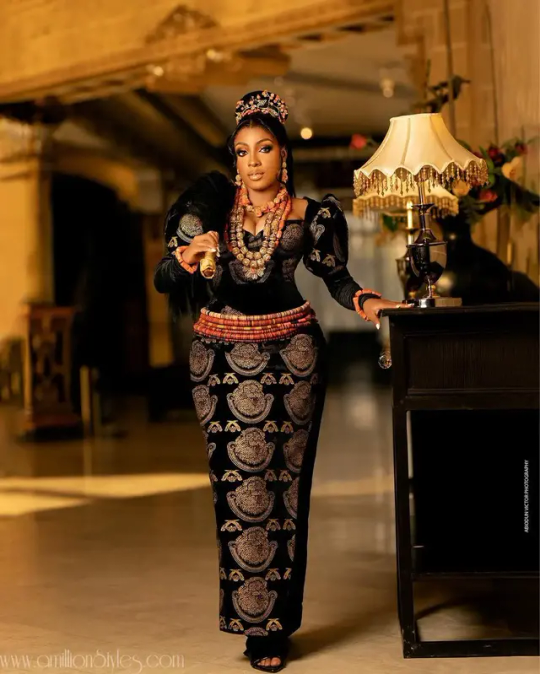
View On WordPress
0 notes
Text

Ikenga (Igbo literal meaning "strength of movement") is a horned Alusi found among the Igbo people in southeastern Nigeria. It is one of the most powerful symbols of the Igbo people and the most common cultural artifact. Ikenga is mostly maintained, kept or owned by men and occasionally by women of high reputation and integrity in the society. It comprises someone's Chi (personal god), his Ndichie (ancestors), aka Ikenga (right hand), ike (power) as well as spiritual activation through prayer and sacrifice.

Ikenga is exclusively an Igbo symbol. Nevertheless, various peoples of Southern Nigeria have slightly different notions of the components of an individual personality, but all agree that these various aspects can only be affected through ritual and personal effort. Some variants of it are found in Ijaw, Ishan, Isoko, Urhobo and Edo areas.
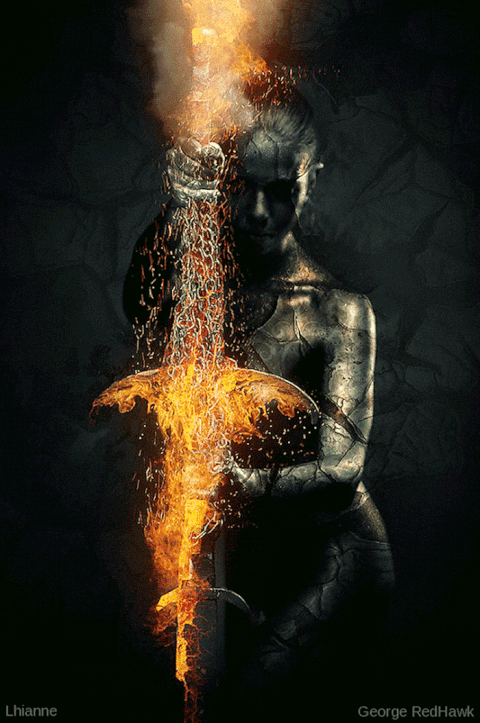
Among the Isoko people, there are three types of personal shrine images: Oma, which represents the "spirit double" that resides in the other world; Obo which symbolizes the right hand and personal endeavor and the lvri which stands for personal determination. In the Urhobo areas it is also regarded as Ivri and in the Edo areas it's called Ikegobo

#ikenga#igbo#african#afrakan#kemetic dreams#brownskin#brown skin#afrakans#africans#african culture#igbo attire#igbo ladies#igbo language#igbo names#igbo culture#igbo village#igbos#igbo women#igboland#afrakan spirituality#african spirituality#african spoonbill#spirit work#spirits#spiritual awakening#spiritual#spirituality#holy spirit#spiritualgrowth#spiritual journey
43 notes
·
View notes
Text
Word List: Fashion History
to try to include in your poem/story (pt. 1/3)
Adinkra - a flat, cotton textile that is stamped with symbols which create the meaning of the garment; produced by the Asante peoples in Ghana
Agal - a rope made from animal hair which wraps around a keffiya (square cloth) on the head and is worn typically by Bedouin men
Akwete - a decorative cloth with complex weave designs, creating intricate geometric patterns, made with many vibrant colors; it is usually made into wrappers for women to wear and it is made by the Igbo women of Nigeria
Aniline Dyes - synthetic, chemical dyes for garments first invented in the 19th century
Anorak - a jacket that typically has a hood, but not always, which was originally worn by the indigenous peoples of the Arctic designed to keep them warm and protected from harsh weather
Back Apron (Negbe) - an oval-shaped decorative pad worn by Mangbetu women over the buttocks in Central Africa
Backstrap Loom - a lightweight, mobile loom made of wood and a strap that is wrapped around the back; it only needed to be attached to a tree or a post for stability and to provide tension
Banyan - a loose-fitted informal robe or gown typically worn by men in the late 17th to the early 19th centuries
Barbette - a piece of linen which passes under the chin and is pinned at the sides, usually worn in conjunction with additional head coverings during the Middle Ages
Bark Cloth - fabric made out of bark from trees
Beadnet Dress - a decorative sheath dress made of beads worn in ancient Egypt
Bloomers - a bifurcated garment that were worn under dresses in the 19th century; they soon became a symbol of women’s rights because early activist Amelia Bloomer wore drawers long enough to stick out from under her dress
Bogolanfini - (bogolan- meaning cloth; fini- meaning mud) a cotton cloth made from strips of woven fabric, which are decorated with symbolic patterns using the mud-resist technique, sewn together at the selvage to create a fabric that is utilized during the main four stages of a West African Bamana woman’s life: puberty, marriage, motherhood, and death
Bombast/Bombasted - the padding used to structure clothing and create fashionable silhouettes in the 16th and 17th centuries
Boubou - an African robe made of one large rectangle of fabric with an opening in the center for the neck; when worn it drapes down over the shoulders and billows at the sleeves
Buff Coat - a leather version of the doublet that was often, but not exclusively, worn by people in the military in the 17th century
Bum Roll - a roll of padding tied around the hip line to hold a woman’s skirt out from the body in the late 16th and early 17th centuries
Burqa - an outer garment worn by Muslim women that covers the entire body, often with a cutout or mesh at the eyes
Busk - a flat length stay piece that was inserted into the front of a corset to keep it stiff from the 16th century to the early 20th century
Bustle - a pad or frame worn under a skirt puffing it out behind
Cage Crinoline - a hooped cage worn under petticoats in the 19th century to stiffen and extend the skirt
Caraco - 18th century women’s jacket, fitted around the torso and flared out after the waist
Carrick Coat - an overcoat with three to five cape collars popular in the 19th century and mostly worn for riding and travel–sometimes called a Garrick or coachman’s coat
Chantilly Lace - a kind of bobbin lace popularized in 18th century France; it is identifiable by its fine ground, outlined pattern, and abundant detail, and was generally made from black silk thread
Chaperon - a turban-like headdress worn during the Middle Ages in Western Europe
Chemisette - a piece of fabric worn under bodices in the 19th century to fill in low necklines for modesty and decoration
Chiton - an ancient Greek garment created from a single piece of cloth wrapped around the body and held together by pins at the shoulders
Chlamys - a rectangular cloak fastened at the neck or shoulder that wraps around the body like a cape
Chopines - high platform shoes worn mostly in Venice in the 16th & 17th centuries
Clavus/Clavi - decorative vertical stripes that ran over the shoulder on the front and back of a Late Roman or Byzantine tunic
Clocks/Clocking - decorative and strengthening embroidery on stockings in Europe and America during the 16th-19th centuries
Cochineal Dyes - come from the Cochineal beetle that is native to the Americas and is most commonly found on prickly pear cacti; when dried and crushed, it creates its famous red pigment that is used to dye textiles
Codpiece - originally created as the join between the two hoses at the groin, the codpiece eventually became an ornate piece of male dress in the 16th century
Cuirass Bodice - a form-fitting, long-waisted, boned bodice worn in the 1870s and 1880s–almost gives the appearance of armor as the name suggests
Dagging - an extremely popular decorative edging technique created by cutting that reached its height during the Middle Ages and Renaissance
Dalmatic Tunic - a t-shaped tunic with very wide sleeves; worn by both men and women during the Byzantine empire
Dashiki - a loose-fitting pullover tunic traditionally worn in West African cultures that was adopted by African diasporic communities as a symbol of African heritage in the 1960s and then more widely worn as a popular item of “ethnic” fashion
Dentalium Cape - or dentalium dress is a garment worn by Native American women that is made from the stringing together of dentalium shells in a circular pattern around the neck and across the chest and shoulders
Doublet - an often snug-fitting jacket that is shaped and fitted to a man’s body–worn mostly in the 15th to 17th centuries
Échelle - a decorative ladder of bows descending down the stomacher of a dress; worn during the late 17th and 18th centuries; sometimes spelled eschelle
If any of these words make their way into your next poem/story, please tag me, or leave a link in the replies. I would love to read them!
More: Fashion History ⚜ Word Lists
#word list#fashion history#writeblr#dark academia#spilled ink#writers on tumblr#writing prompt#terminology#poetry#poets on tumblr#literature#light academia#studyblr#linguistics#lit#words#fashion#culture#worldbuilding#creative writing#writing reference#fiction#writing tips#writing advice#writing resources
275 notes
·
View notes
Text
The University of Oxford is currently showing off a collection of African items, among which is “a mask made by Nigeria's Igbo people and which was originally used in male-only rituals”, which women are not allowed to see (Radnedge). This mask is part of a collection which the museum describes as being “closely tied to British Imperial expansion”, and falls under “a policy to ensure women do not view the mask in relation to taboos about secret ceremonies, human remains, nudity as well as gender roles” (Radnedge). In other words, the cultural values of the group which the artifact was taken from are being respected, instead of the commonly accepted ones of the culture which the museum is a part of. Why are members of a modern, and increasingly egalitarian society held to the traditions of one steeped in misogyny and woman hating? Why is misogyny given deference and respect when it comes from another culture?
As “Art critic and author Ruth Millington” notes, “To deny all women, of all cultures, sight of something because that is a taboo in one particular culture seems an extreme stance, particularly given that this country is a modern, liberal and enlightened society. Surely women should be given the right to decide, after reading about any cultural sensitivities, if they wish to look upon the artefact or not. When it comes to art, we should all have equal rights, regardless of sex, to view what we would like to.” (Radnedge) Not to mention, the cultural sensitivities of women never seem to be held to the same high esteem. When muslim women mention that they cannot take off their hijab in front of trans-identified males, they’re called transphobic for it, and told that they are harming trans-identified males with their bigotry by doing so. Not to mention, the sudden confirmation that women do exist, and are a separate entity from men is hypocritical in a society where self-id exists, and anyone can identify as anything they wish, regardless of reality.
We see a similar pattern of single sex spaces being respected when it is a men’s club- such as in 2018, when a group of female protesters entered the men’s pool after identifying as male. This occurred in response to Hampstead’s inclusion of trans-identified males in the women’s pond the previous December. However, despite the women protesters “telling staff at the pond that they 'identified as male' and said they had the right to swim there… police arrived 15 minutes later and they were forced to leave” (Daily Mail).
https://www.dailymail.co.uk/news/article-5780623/Female-protesters-break-men-lido-leap-pool.html. Accessed 21 June 2024.
Any other examples come to mind?
176 notes
·
View notes
Text
PAC: What Would Happen If You Had a Friend Like You?
Hello beautiful people! I thank you guys so much for the support I’ve received over the past couple of months and even this past weekend. I will continue to make content that resonates with my collective. I am delivering my new PAC as promised, even though it was supposed to come out last night (oopsie lol). Anyway, I really hope you guys enjoy this one. It is inspired by tears and frustration of those who feel taken for granted in their friendships (including myself). Please don’t hesitate to book a reading with me if you would like to receive a personal reading. Without further ado, please select your pile.
Top Left-to-Bottom Right: (1-4)

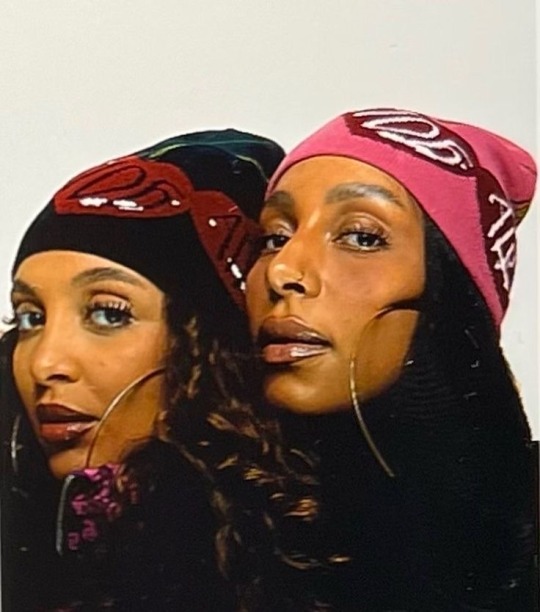
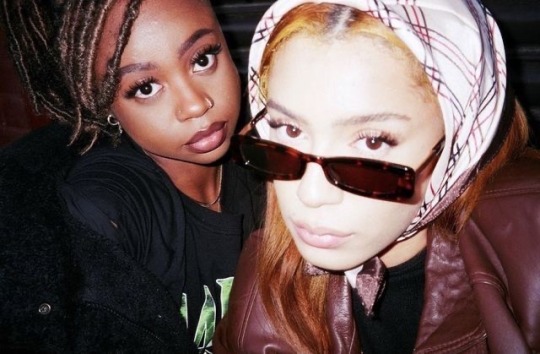
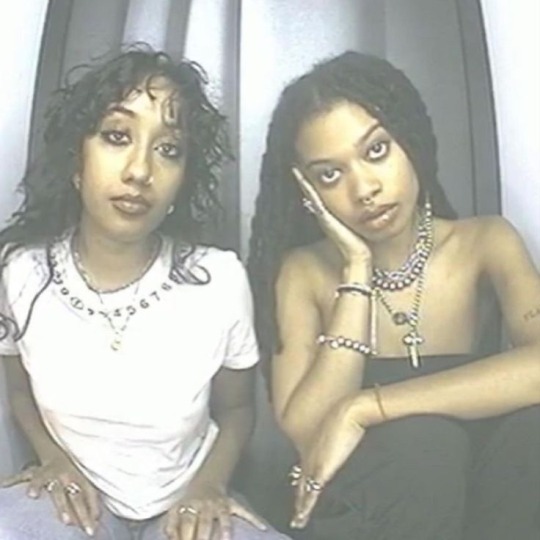
Pile One: If you had a friend like you, PIle One, I think that you would meet them while working/interning for a company. I think that this person would be the fresh air to the heavy atmosphere surrounding y’all. I see that you are both sophisticated professionals who know how to handle conflict calmly for the most part. It’s hard for you both to “pop off” and this may be a problem within you guys’ friendship. You both must learn how to be okay with not letting things go off the hook. You must be intentional with the way you navigate or you will be screwed over every time. I feel that if you had a friend like you, you would be very suspicious of this person because you can’t put a finger on why you feel this way. This person will be equally suspicious. But once you actually talk to each other, you will share stories and experiences regarding business ideas, your dream career environments, many of you will bond over being the only women at work and even sharing secrets about your family dynamics. I could see that you will run a business with this person and it will be successful. It may take a while to hit this bump but it’s definitely possible. Lastly, beware of oversharing too soon or jumping to conclusions. Take it slow, babe. There will be slip ups between the both of you but it’s best that you become strict with yourself on what it means to have a healthy friendship.
Cards Used: Queen of Cups, The Chariot, The Emperor, The Tower (RX), 9 of Wands, 6 of Swords
extras: nipsey hussle. “motivate” saweetie. moldavite. overbite.
Pile Two: It’s very interesting how your story will play out, Pile Two. It’ll be a story to tell your grandchildren. So what I am getting from your pile is that you will meet your other half during a breakup. But the thing is, this person will partially be the reason for your breakup. I see the scenario of women getting played by a guy. The movie ‘John Tucker Must Die’ comes to mind. Also, the storyline between Teddy, Spencer and Skylar from Good Luck Charlie comes to mind. You guys will find comfort in each other during this painful period. Many people would stay away from “the other woman”, but you won’t because your situation is unique. I feel like if you are dealing with someone right now, they have two sides to them. They could have air sign placements. I feel like when you come face-to-face with this person, you will not feel any sort of anger or resentment towards them. You will cry in this person’s arms and immediately feel at home. But you should know that once you feel that you want to move on from this, the bond that once existed will change and this change will more than likely not be taken lightly. So enjoy your time with this person for the moment being, Pile Two. Have conversations with this person about how the dynamic will change overtime to prepare for it.
Cards Used:The World, 3 of Swords, Two of Cups, Wheel of Fortune, King of Cups (RX)
extras: igbo tribe. medulla. voguing practice. thelma and louise. grief counseling. hideous bangs.
Pile Three: I feel like this group is into music. You may want to move to one of the music capitals like Atlanta, Nashville, New York or Miami to pursue a music career. In my third eye, I am seeing snippets of the pilot episode of ‘Star’. The premise of the show is the formation, trials and tribulations of a girl group. There are two sisters and a best friend that are in this girl group. During the pilot, the blonde sister has to physically fight her sister’s abuser to bring her to Atlanta so that they can move to Atlanta with their aunt. After this, they are proactive in jumpstarting their career even with drama, drugs and whatnot clouding their future. Now, I feel like your friend will obviously be a newcomer in the music industry as well. It is best if y’all work together. I see that if this person has a kid, you will be the child’s godparent. I also see some notoriety, fame and recognition coming with this person once you all decide to work together. This will only happen because y’all collaborated; if y’all went solo, the same result would not happen. But you need to be aware of doing things in vain. You and them both need to think about each other because the spotlight can blind people’s true intentions. Think clearly. But I feel like y’all would actually be friends for a long time despite any differences that may occur because of vanity. There’s chemistry that y’all have with each other that you will not have with anyone else so cherish each other while you all are still here.
Cards Used: 10 of Cups, Four of Discs (RX), The Star, The Empress, 8 of Cups, 6 of Wands, King of Wands
extras: girl groups. ‘musically inclined.’ music industry. tlc. money grab. “cut the check.” “ain’t shit sweet.”
Pile Four: And last but not least, Pile Four. Your situation will involve meeting someone who is also addicted to something. You have their vices so do they. I am channeling the energy of Edward Norton and Maria Singer. They are liars. They show up at AA meetings for fun and catch each other in a lie. I feel like this friendship will be about holding each other accountable. I am also channeling Rue and her sponsor, Ali. They have an uncle-niece relationship. I believe that you all will have a significant difference in maturity. And this will be the reason why you bump heads. Someone believes that they know more than the other person because they’ve been doing it longer or they don’t believe that their vice is worthy of being taken seriously. Now, this vice could be drugs, sex, over/undereating, online shopping, gambling, playing video games, etc. Now, when you meet this person, you will be put off because you won’t know any better. But this person will leave a strong impact on your life. It is best that you keep them around because you won’t know what you got till it’s gone. Taking this person for granted will be the worst thing that you can do because there is no one else that will hold you accountable like them, Pile Four.
Cards Used: 9 of Discs, Princess of Cups, Temperance, 6 of Wands, The High Priestess, The Hermit, 9 of Wands
extras: low fade haircut. burning hair. electric slide. goal chaser. fear of death. close call. chewing ice.
#law of assumption#manifesting#neville goddard#tarot#hoodoo#tarotreading#astro notes#pick a card#pick a pile#divination#pac reading#tarotcommunity#spirituality#tarot deck#tarot pull#daily tarot#pick an image#pick a reading#free tarot#tarot cards#tarot pick a card#tarot pac#black tarot readers#tarot community#tarot reading#tarotblr#tarot witch#kpop tarot#Spotify
163 notes
·
View notes
Text
The evidence marshaled by anthropologists showing the effects of Western colonialism on traditional female power and authority is impressive. The work of some writers has led to the conclusion that "the penetration of Western colonialism, and with it Western practices and attitudes regarding women, have so widely influenced women's role in aboriginal societies as to depress women's status almost everywhere in the world." In this chapter two case studies showing the manner in which European influence eroded the bases of traditional female authority are presented.
In one case, the Igbo of southeastern Nigeria, the struggle was between Igbo women and British administrators, with Igbo men playing a passive but supportive role. In the other case, the Iroquois, the struggle was between Iroquoian women and the followers of a charismatic Iroquoian male who, aided by Quaker missionaries, sought to revitalize Iroquoian life and institute a new sex-role plan. In both cases women resisted the forces of change. Igbo female resistance led to the "women's war," in which thousands of women marched against the British and destroyed property. Iroquoian female resistance led to witchcraft accusations, resulting in the execution of some women for following traditional female patterns. The killing and wounding of approximately 100 Igbo women and the token executions among the Iroquois broke the spirit of resistance.
-Peggy Reeves Sanday, Female Power and Male Dominance: On the Origins of Sexual Inequality
#Peggy Reeves Sanday#anthropology#colonization#female oppression#male violence#witch hunts#sex roles
94 notes
·
View notes
Text
Character Designs
At long last, here is the masterpost for the main characters' designs. This is how they appear in my head, and how they will appear in A Revised History of Erdas. So much thought (and research) has gone into this. I've taken a lot of creative liberty here, but I hope you enjoy how I envision these characters!
Conor
For Conor, I drew inspiration from Celtic and more specifically Irish culture.
He has strawberry-blond hair, as shown on the covers of Hunted and The Dragon's Eye. The colour is usually described as reddish-blond or reddish-gold because the term "strawberry-blond" does not exist in Erdas, but for clarity's sake I have named it as such here. It is slightly wavy and long enough to rest on his shoulders. Occasionally, he will incorporate braids into his hairstyle in light of his elevated status after the war. Otherwise, it is left loose. His pale skin is sprinkled all over with freckles; he has gotten a lot of them more since he left Eura, due to sun exposure. His eyes are green as described in Against the Tide.
He is chubby and muscular in equal measures. His weight is known to fluctuate due to the harrowing events he goes through on the daily, but he normally has a generous amount of extra fat all over. He started off on the shorter side, but had an impressive growth spurt during the war and the year after. His final height is 5'6.5", or 5'7" (170 cm) by rounding up, which he reaches by age sixteen. This is a little above average for Euran men.
When his facial hair starts to come in, he lets it grow, resulting in a patchy beard by the time he is sixteen. Shaving is not in a Euran shepherd’s nature.
He is physically disabled in two ways. The first is that he is missing the first joint on his left index finger from being bitten by an unidentified animal in Fire and Ice. The second is the permanent limp in his right leg from a broken ankle in The Dragon's Eye that healed badly. He uses his bond token, Pathfinder, to support himself when he walks.
Many scars crisscross his face, arms, legs and back, but they aren't easily visible against his pale skin. The ones that stand out the most are the burn scars from the fire Kovo unleashed in Sadre, particularly one running along his jaw. The spiral-shaped mark of the Wyrm on his forehead eventually shrinks and fades away to nothing, much to his relief.
His tattoo of Briggan is on his right bicep, frozen mid-run.
While not a physical trait, he has a heavy Euran accent that is comparable to Irish in the real world. At times it can be hard for non-Eurans to understand, but luckily his friends know him well enough to decipher his speech even when it is thickest.
He wears the simplest clothing of the bunch: Just a beige tunic, grass-stained trousers and a pair of warm sheepskin boots from home. His thick travelling cloak is worn over his shoulders, fastened to one side by a wolf-shaped brooch. He rarely swaps out his travelling cloak for a regular one, preferring its weight.
The head of his hand axe is inlaid with silver designs. He covers the blade with a piece of leather and keeps it in his belt by way of a special loop, with his cloak gathered over the arm that draws it.
Abeke
For Abeke, I took inspiration from the Yoruba and Igbo ethnic groups of Nigeria.
Her coily dark hair ends just below her shoulders. It is worn in braids that begin at her hairline and trail down her scalp in straight lines, ending in up to twenty individual braids. She often stacks wooden or green beads on the ends. This style of braids is unique to her tribe. It also denotes her marital status; Yufandi girls and women wear their hair in braids if they are unmarried, and loose or covered if they are married. She only ties her braids back when she is hunting, travelling, fighting or doing some other kind of physical activity, letting them down at times when the group is resting. She has warm-toned dark brown skin with some freckles scattered here and there, mostly on her arms and face. Her eyes are dark brown.
She is broad-shouldered but lean, with toned arms and legs. Her final height is 5'8" (172 cm), which she reaches by age fifteen. This is considered fairly tall by Niloan standards. She has been the tallest member of the Four since the very beginning.
Like many Niloans, she has tribal marks on her face. Three long, thick, vertical grooves on each cheek indicate that she is of the Yufandi tribe, and three smaller ones in the middle of her forehead indicate that she is both Marked and a Rain Dancer. Chinwe cut the latter three onto her skin immediately after she summoned Uraza, as part of the ritual. This is an age-old cultural practice, one Abeke harbours no ill feelings about.
She has a number of other scars, both from the war and from her life as a hunter in Nilo. These are quite noticeable due to her dark skin tone. The most prominent is a mass of scar tissue on her left shoulder from when Tai Li stabbed her in Fire and Ice. The wound left her with permanent nerve damage, and she still experiences mild discomfort and tingling in that area. She also experiences numbness and increased sensitivity to cold in her toes from the deep frostbite she sustained whilst in Arctica.
As a tattoo, Uraza crouches on her right forearm, claws extended.
She speaks with an elegant western Niloan accent, similar to a Nigerian one on Earth.
She prefers light, comfortable clothing that allows for ease of movement. In Nilo, she wore a simple wrap made of handwoven cloth. When she joined the Conquerors and later the Greencloaks, she switched to more practical clothing for the colder environment: A long-sleeved white shirt under a length of goatskin and a pair of light pants. The triangular, tasselled thing at her waist on the book covers is a small bag, attached to her woven grass belt and used to store her personal belongings. She has leather shoes, more like slippers, that allow her to move silently. If the environment demands it, she will switch to hardier, but still graceful, boots. She prefers to wear her regular cloak over one shoulder, but wears her travelling cloak over both so it doesn't trip her up.
She uses a self bow, well-made, crafted from Niloan wood and embellished with subtle yet beautiful carvings. Lenori gifted it to her after the war, with the help of the Keeper. When not in use, it will either be unstrung (for long-distance travel) or left as is (if she needs it at the ready). In both cases, it is carried on her back, secured to her quiver.
During their stay in the Gulf of Amaya with the Conquerors, Abeke and Shane got matching beaded bracelets to represent their friendship. These bracelets are recurring items for the both of them that provide comfort and, later, anguish. Abeke stopped wearing hers after Shane's betrayal, but could never bring herself to get rid of it. Inexplicably, she thought to take it in her bag when she and Rollan set out from Greenhaven in Fall of the Beasts. When she made up with Shane, they discovered, to their shared surprise, that they had kept their bracelets the whole time. Abeke's is gold, white and black with striking geometric patterns, evoking the Huichol beading style of Mexico. It is one of her most meaningful possessions.
Meilin
The Han dynasty of Imperial China is where the inspiration for Meilin's character came from. Central Zhong overall is meant to be reminiscent of this period.
She has tan skin and long, straight, silky black hair which is usually styled in a topknot behind her head, with or without short plaits running down the sides (the hairstyle she is shown with on the cover of Blood Ties). Her eyes are a brown so dark they appear almost black.
Her build is stocky and well-muscled; she could not be called slender. Her final height is 5'3" (160 cm), which she reaches by age fifteen. This is the average for women in central Zhong, and makes her the smallest member of the Four.
It is perhaps a testament to her skill in battle that she has by far the least physical scars of the Four. The most noticeable are the light burn scars on her back that wrap around to her right shoulder from the fire in Sadre, and even then, those are covered up in public.
For her pierced ears, she usually opts for small teardrop earrings made of jade or silver.
Her tattoo of Jhi rests on the back of her dominant hand. She made the bold decision to get more tattoos in Jano Rion after the Second Great War: A sword, modelled after her own legendary Sword of Teng, along her inner right forearm, with a Yin Yang symbol at the tip near her wrist. These tattoos hold great personal meaning.
Though she speaks the common tongue with ease, she has a discernible central Zhongese accent, which could be likened to a Chinese one in the real world.
Her usual attire is a paofu robe (more specifically jiaolingpao) over a sleeveless white shirt and beige trousers, with a belt or sash at her waist and black leather boots. The robes she favours are knee-length, allowing for freer movement, padded for warmth and with fitted leather sleeve-cuffs to restrain the wide sleeves and protect her wrists and forearms. Her favourite robe is made of red silk and embroidered with dragons. She wears her travelling cloak over her shoulders, but is also known to don a green robe instead, especially for regular wear. In general, she gravitates to stronger colours like reds and oranges. She dresses the most vibrantly (and expensively) of the Four.
Generally, Meilin presents herself in a masculine way. Her favoured clothing, accessories and even hairstyle are more typical of men in Imperial Zhong. On top of gravitating to these styles because they are simply the most practical for a warrior, Meilin feels more comfortable and like herself in men's clothing, and enjoys dressing this way because of how confined she felt when conforming to the standard imposed on Zhongese women.
Her sword, the legendary Sword of Teng, is a jian that has been passed down through her family for many generations. In times when she needs it strapped to her, she will wear a belt instead of a sash to hold it in its scabbard.
Her trademark accessory is a small Yin Yang amulet attached to a silk thread, meant to be worn as a necklace, but often just carried by her side. It was her last birthday gift from her father, given to her on the day she summoned Jhi. This amulet later becomes her bond token, Peacefinder.
Rollan
Although the original books made it a little ambiguous, from details sprinkled throughout and especially the description of Aidana, we can conclude that Rollan is the Erdas equivalent of Native American. In ARHoE, this is an integral part of Rollan's character. For his tribe, I referenced the Algonquian (and more specifically Wabanaki) peoples of eastern Canada.
He has weathered, light brown skin and long, thick, straight black hair. In the first arc, he wore his hair loose or tied back in a ponytail. After the war, when he and his mother had the opportunity to reconnect with their tribe in Amaya after being isolated from them for so long, Rollan adopted many of their customs. He came back with his hair in two braids, a style that had been practised by the Wascow and many other Amayan tribes for centuries. His eyes are dark brown.
Years of malnourishment on the streets made Rollan leaner and lighter-built than the others, and even while living the good life at Greenhaven he remains somewhat scrawny. For the same reason, his final height of 5'4" (162 cm), which he reaches by age sixteen, is below average for northern Amayan men.
He isn't able to grow nearly as much facial hair as Conor -- just a few dark hairs above his upper lip. He scrapes off his thin moustache when circumstances allow it, in accordance with his tribe's customs.
When he was a child, he was caught stealing and had his nose slit as punishment. The scar left behind is one of his most recognisable features. He has too many other scars to mention.
Both of his ears are pierced, a procedure he had done while staying with his tribe. He owns and wears a variety of earrings, but his favourites are a pair of feathers that fell from Essix.
Essix's tattoo is emblazoned on his upper chest, her outstretched wingtips skimming his collarbones. He has a multitude of other tattoos, all of which were done during his time with the Wascow. His whole body is marked with symbols representing his tribe, spirit animal and achievements, including one for every battle he has won. The process was gruelling, but Rollan's ego has soared since getting them.
The subject of his accent is an interesting one, because unlike the other three, Rollan didn't grow up speaking the language of his people. Common is the only language he is fluent in, and, of course, he didn't grow up with a fixed person to influence how he spoke it. The result is his accent being an odd blend of speech habits from the constantly changing cast of people around him -- his mother, the people at the orphanage, the Widow Renata, his street gang and even foreign traders who spent time in Concorba. There is influence not only from different Amayan tribes in his pronunciation patterns, but parts of Eura and Zhong. Conor, Abeke and Meilin have never heard anything like it.
He typically wears a long-sleeved grey shirt, trousers and a pair of deerskin moccasins. Even though his choice of attire is rather simple, it is worth more than anything he ever owned as an orphan in Concorba. Beadwork features prominently on his clothing and accessories, including on his earrings, in patches sewn on his trousers and moccasins, and his treasured sash (which is best visible on the cover of Fire and Ice). His worn green cloak hangs around his shoulders. He doesn't own a regular one, only Tarik's travelling cloak.
The dagger he favours is a straight, mean-looking blade with an ornate hilt. He keeps it sheathed at his belt when not in use.
I thought it would be fitting to give them all a matching item. Something they carry around that reminds them of each other. Of their team. So, while in the capital of Zhong on their victory march after the war, the friends came across a collection of attraction charms and decided to each buy one. They were made of semi-precious stones, small and teardrop-shaped, attached to a little ring with a cap of silver or gold. They each chose a stone with meaning that resonated with them. Conor's is labradorite, which symbolises inner peace. Abeke's is sunstone, which stands for strength. Meilin's is amethyst, which symbolises balance. Rollan's is garnet, for clarity. The kids paired them with charms of their spirit animals and wear them in various ways -- on bracelets, in pockets, on necklaces close to their hearts. Every time they look at them, even if they are a thousand miles away from the people who keep the other pieces of the set, they think of their family.
There you have it, the altered character designs for the Four Heroes! These will be incorporated into the ARHoE masterdoc when it is completed. More pivotal characters to follow!
Part two
#crawls in here covered in blood#it's finally here.#text post#character designs#a revised history of erdas#spirit animals#spirit animals books#spirit animals series#conor#abeke#meilin#rollan
43 notes
·
View notes